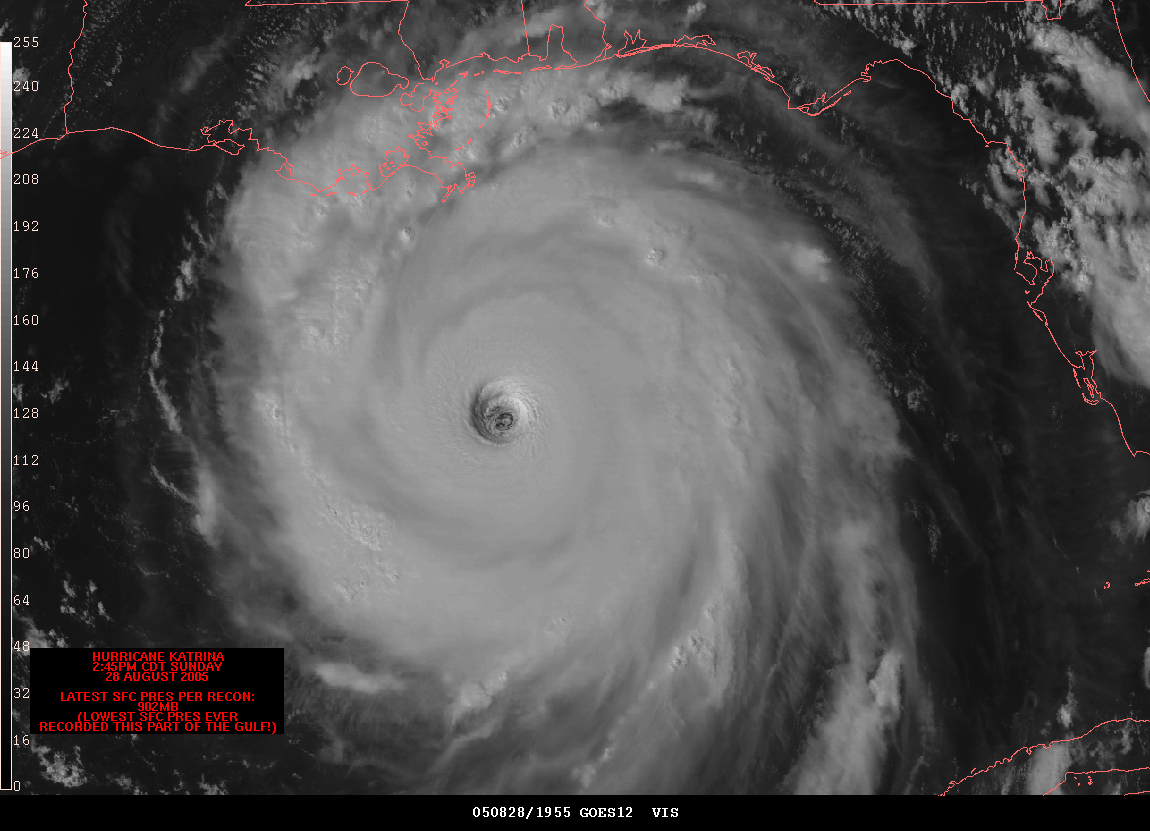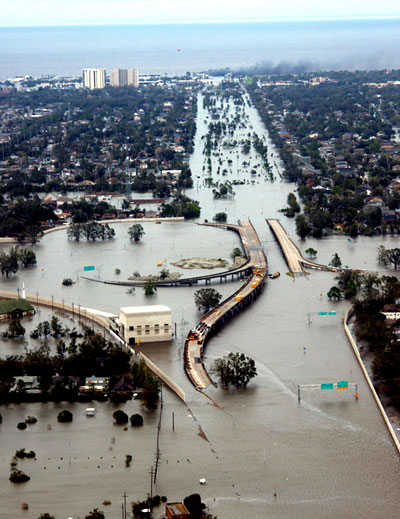 While New Orleans conducted a weekend of remembrance to honour the first anniversary of Hurricane Katrina, this year’s first major hurricane was gathering strength in the Caribbean. The latest storm “Ernesto” could reach Category 3 strength by late Wednesday when it moves into the Gulf of Mexico. The Florida Keys have ordered visitors to leave the islands. Strong rain and winds are now hammering south-western Haiti, prompting fears of landslides in an area that has been heavily deforested.
While New Orleans conducted a weekend of remembrance to honour the first anniversary of Hurricane Katrina, this year’s first major hurricane was gathering strength in the Caribbean. The latest storm “Ernesto” could reach Category 3 strength by late Wednesday when it moves into the Gulf of Mexico. The Florida Keys have ordered visitors to leave the islands. Strong rain and winds are now hammering south-western Haiti, prompting fears of landslides in an area that has been heavily deforested.New Orleans is yet to finish the repair of 320 kms of levees damaged by Katrina and officials there are carefully watching the path of Ernesto. This time they will evacuate residents in low-lying districts a full 50 hours before landfall if a hurricane threatens the city. Katrina made landfall in Southern Louisiana and Mississippi on 29 August 2005 and claimed 1,695 lives according to official estimates. The disaster was notorious not only for the scale of the devastation but also the slow response of federal and state officials in dealing with the ensuing crisis.
$110 billion has allotted for reconstruction of which authorities have already spent $44 billion. Thousands of people are still waiting for aid to rebuild their homes. The Category 5 storm Katrina was the sixth-strongest Atlantic hurricane ever recorded and the third-strongest landfalling U.S. hurricane ever recorded. Levees separating Lake Pontchartrain from New Orleans were breached by the surge, ultimately flooding 80% of the city. The levees were not designed to withstand category 5 storms. The magazine Scientific American published an article in 2001 predicted that a “major hurricane could swamp New Orleans under 20 feet of water, killing thousands”. The article pointed out that New Orleans was a disaster waiting to happen. The city lies below sea level, in a bowl bordered by levees that fend off Lake Pontchartrain to the north and the Mississippi River to the south and west. The city is sinking and the low-lying Mississippi Delta, which buffers the city from the gulf, is also rapidly disappearing. In 1990 the Breaux Act, named for its author, the Louisiana Democrat senator John Breaux created a task force of several federal agencies to address the severe wetlands loss in coastal Louisiana. The act has brought about $40 million a year for wetland restoration projects, but it hasn't been enough.
Louisiana loses two acres of wetland every hour. This is due to subsidence, oil and gas exploration, the levees on the lower Mississippi River, and other factors. The Louisiana wetlands were created by the draining of the massive Mississippi-Missouri river system onto its delta. It is the third largest drainage system in the world and the largest watershed in North America containing all or part of 31 US states. The delta was built up by alluvium deposited by the river as it slows down and enters the Gulf of Mexico. 12 months ago today, the oppressive atmosphere of the Gulf of Mexico turned the moderate category 1 hurricane Katrina into something massive.
 Its landfall in Florida did very little damage. As well as hammering New Orleans, the subsequent storm surge caused severe or catastrophic damage along the Gulf coast, devastating the cities of Mobile, Alabama, Waveland and Biloxi/Gulfport in Mississippi, and Slidell and other towns in Louisiana. On 28 August, 2005 the scale of Katrina became apparent. The weather service predicted that the New Orleans/Baton Rouge area would be "uninhabitable for weeks" after "devastating damage". On 29 August, the storm made landfall with 200 kph winds and the surge breached the levees around New Orleans. 4 metre tides were recorded on the coast of Mississippi. New Orleans was subjected to hurricane conditions for many hours. Most of east New Orleans was flooded by levee breaches. The badly damaged Superdome was not evacuated and sheltered up to 20,000 people. Two sections of its roof were compromised and the dome's waterproof membrane had been peeled off. The situation inside the building was described as chaotic; reports of fights, rape, and filthy living conditions were widespread.
Its landfall in Florida did very little damage. As well as hammering New Orleans, the subsequent storm surge caused severe or catastrophic damage along the Gulf coast, devastating the cities of Mobile, Alabama, Waveland and Biloxi/Gulfport in Mississippi, and Slidell and other towns in Louisiana. On 28 August, 2005 the scale of Katrina became apparent. The weather service predicted that the New Orleans/Baton Rouge area would be "uninhabitable for weeks" after "devastating damage". On 29 August, the storm made landfall with 200 kph winds and the surge breached the levees around New Orleans. 4 metre tides were recorded on the coast of Mississippi. New Orleans was subjected to hurricane conditions for many hours. Most of east New Orleans was flooded by levee breaches. The badly damaged Superdome was not evacuated and sheltered up to 20,000 people. Two sections of its roof were compromised and the dome's waterproof membrane had been peeled off. The situation inside the building was described as chaotic; reports of fights, rape, and filthy living conditions were widespread. The rescue effort was hampered by damage to most of the road in and out of the city. Because authorities were focussed on rescue efforts, looting and violence became serious problems in the aftermath of the storm. On 31 August, New Orleans's 1,500-strong police force was ordered to abandon search and rescue missions and turn their attention toward controlling the widespread looting. They were bolstered by 6,500 National Guards who arrived a day later.
By 3 September the situation had stabilised. The political price was paid by Michael D Brown, director of the Federal Emergency Management Agency (FEMA). He resigned on 12 September in a move that made him look like the scapegoat. Video was released that showed President George W Bush being warned on the eve of Hurricane Katrina that New Orleans' flood defences could be overcome. Bush accepted he shared some of the responsibility for the flawed response to Katrina and the White House has talked of the "fog of war" rendering decision-making difficult. Michael Brown told AP this week that he did not "buy the 'fog of war' defence". "It was a fog of bureaucracy," he said.
That fog has not yet lifted and the delta remains vulnerable to an almost entirely man-made catastrophe.
No comments:
Post a Comment